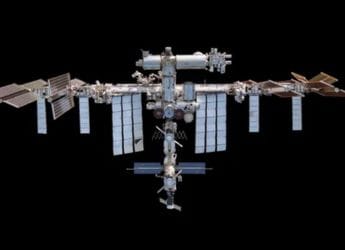- Home
- Science
- Science News
- James Webb Space Telescope Uncovers Inside Out Galaxy 700 Million Years After Big Bang
James Webb Space Telescope Uncovers Inside-Out Galaxy 700 Million Years After Big Bang
JWST has found an early universe galaxy forming stars faster on the outer edges than its core, a first-of-its-kind observation.

Photo Credit: NASA/ESA/JWST
A bright spiral galaxy appears on a background of thousands of other distant galaxies
The James Webb Space Telescope (JWST) has made a remarkable discovery. The telescope has found a galaxy from the early universe that appears to have grown from the outside in. This galaxy, known as JADES-GS+53.18343−27.79097, was formed just 700 million years after the Big Bang. It's significantly smaller than our Milky Way but demonstrates an unusual growth pattern where stars are forming more rapidly at its outer edges compared to its dense centre. This discovery confirms theoretical predictions about how galaxies might have formed in the early universe.
Growth in Galaxies: A New Discovery
Astronomers have long theorised that galaxies in the early universe could grow in an “inside-out” manner, but these ideas lacked observational proof until now. Thanks to JWST's advanced capabilities, researchers were able to study galaxies that were previously hidden behind gas and dust. The discovery, published in Nature Astronomy, represents the earliest observation of such a phenomenon, and it opens new pathways for understanding how galaxies evolve. William Baker, a graduate student at the University of Cambridge, explained how this observation felt like “checking your homework” since it confirmed long-held models.
Looking Back in Time
This galaxy was identified through JWST's JADES (JWST Advanced Deep Extragalactic Survey) project, which collects light from distant objects, allowing astronomers to study the universe's past. Using the telescope's Near-Infrared Spectrograph (NIRSpec), scientists calculated the ages of the galaxy's stars. They found a dense core surrounded by rapidly forming stars in a disc of gas and dust. The galaxy is doubling in size every 10 million years—much faster than the Milky Way's growth rate.
Sandro Tacchella, Professor of Astrophysics at the University of Cambridge, noted that this discovery raises important questions about galaxy formation. Researchers now plan to investigate whether other galaxies from this period exhibit similar behaviour.
Catch the latest from the Consumer Electronics Show on Gadgets 360, at our CES 2026 hub.
Related Stories
- Samsung Galaxy Unpacked 2025
- ChatGPT
- Redmi Note 14 Pro+
- iPhone 16
- Apple Vision Pro
- Oneplus 12
- OnePlus Nord CE 3 Lite 5G
- iPhone 13
- Xiaomi 14 Pro
- Oppo Find N3
- Tecno Spark Go (2023)
- Realme V30
- Best Phones Under 25000
- Samsung Galaxy S24 Series
- Cryptocurrency
- iQoo 12
- Samsung Galaxy S24 Ultra
- Giottus
- Samsung Galaxy Z Flip 5
- Apple 'Scary Fast'
- Housefull 5
- GoPro Hero 12 Black Review
- Invincible Season 2
- JioGlass
- HD Ready TV
- Laptop Under 50000
- Smartwatch Under 10000
- Latest Mobile Phones
- Compare Phones
- Vivo Y500i
- OnePlus Turbo 6V
- OnePlus Turbo 6
- Itel Zeno 20 Max
- OPPO Reno 15 Pro Mini 5G
- Poco M8 Pro 5G
- Motorola Signature
- Vivo Y50e 5G
- Lenovo Yoga Slim 7x (2025)
- Lenovo Yoga Slim 7a
- Realme Pad 3
- OPPO Pad Air 5
- Xiaomi Watch 5
- Huawei Watch 10th Anniversary Edition
- Acerpure Nitro Z Series 100-inch QLED TV
- Samsung 43 Inch LED Ultra HD (4K) Smart TV (UA43UE81AFULXL)
- Asus ROG Ally
- Nintendo Switch Lite
- Haier 1.6 Ton 5 Star Inverter Split AC (HSU19G-MZAID5BN-INV)
- Haier 1.6 Ton 5 Star Inverter Split AC (HSU19G-MZAIM5BN-INV)

















